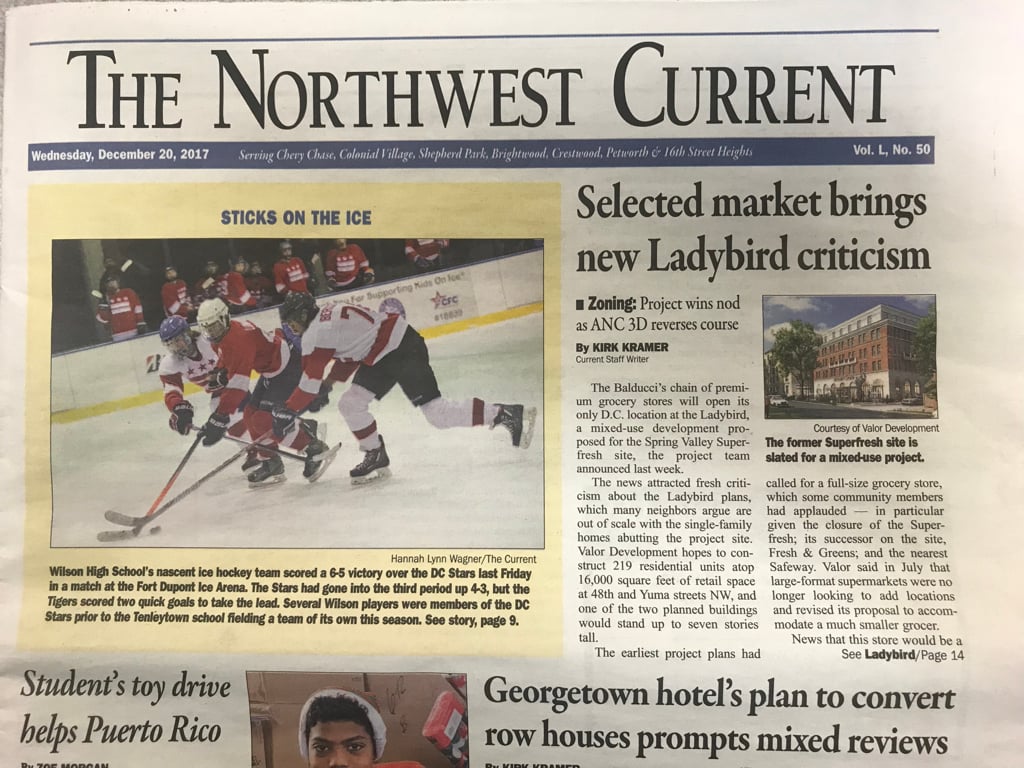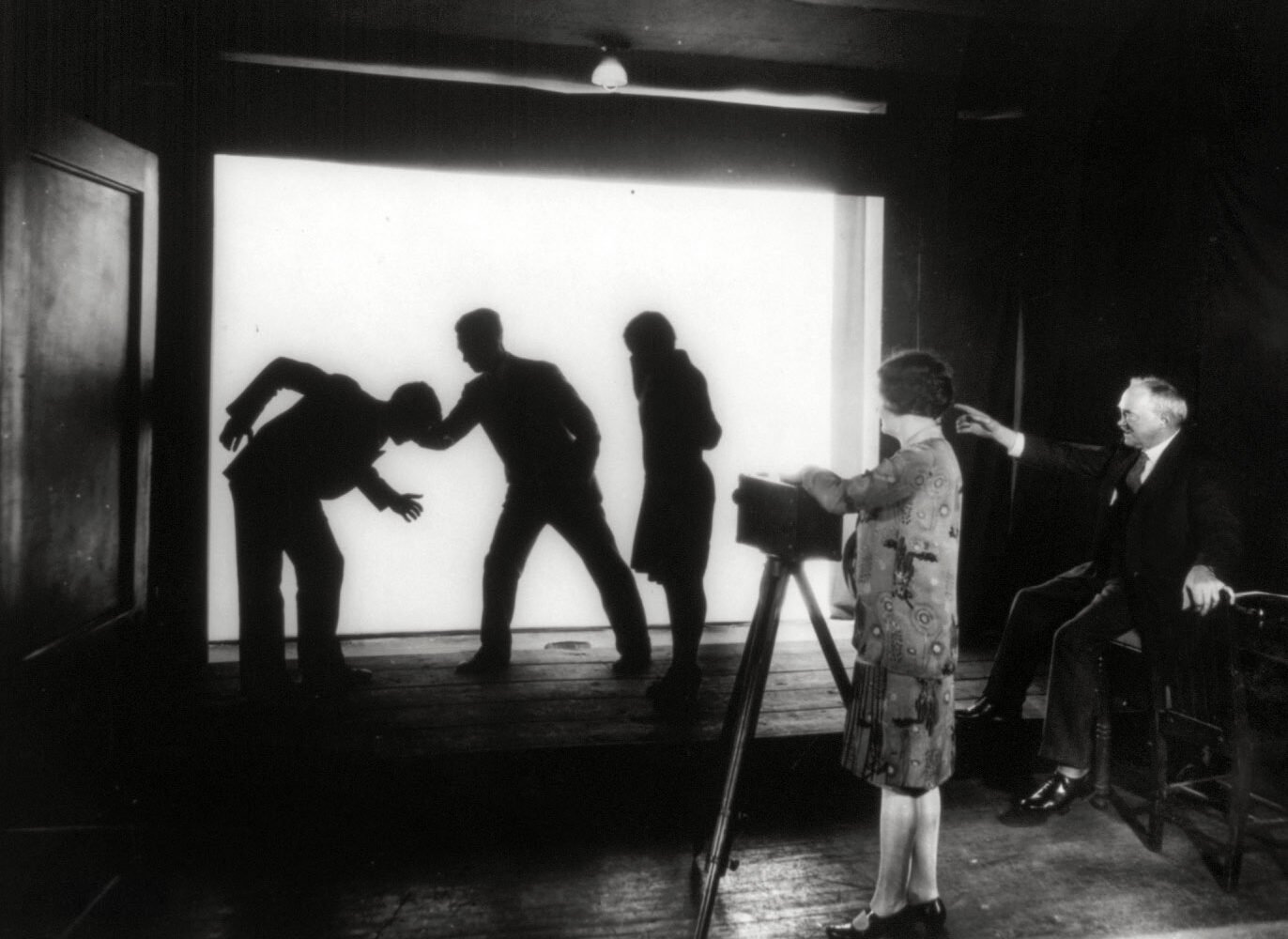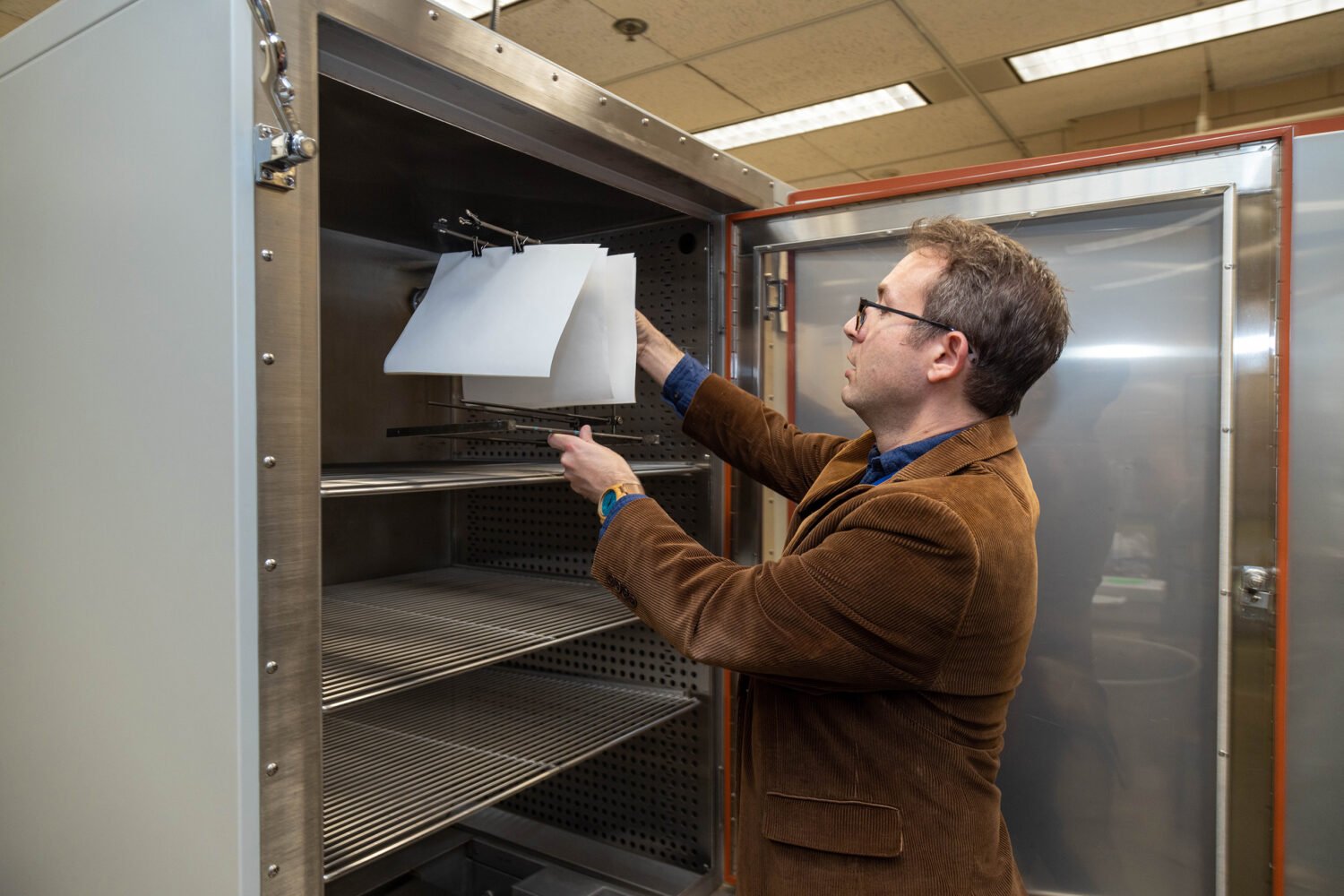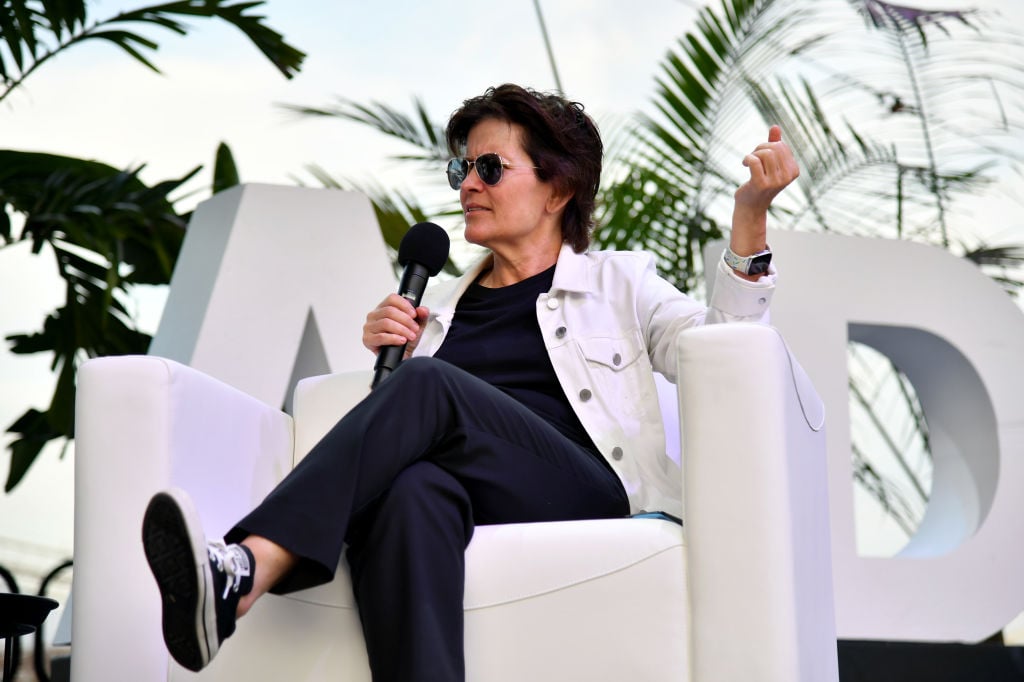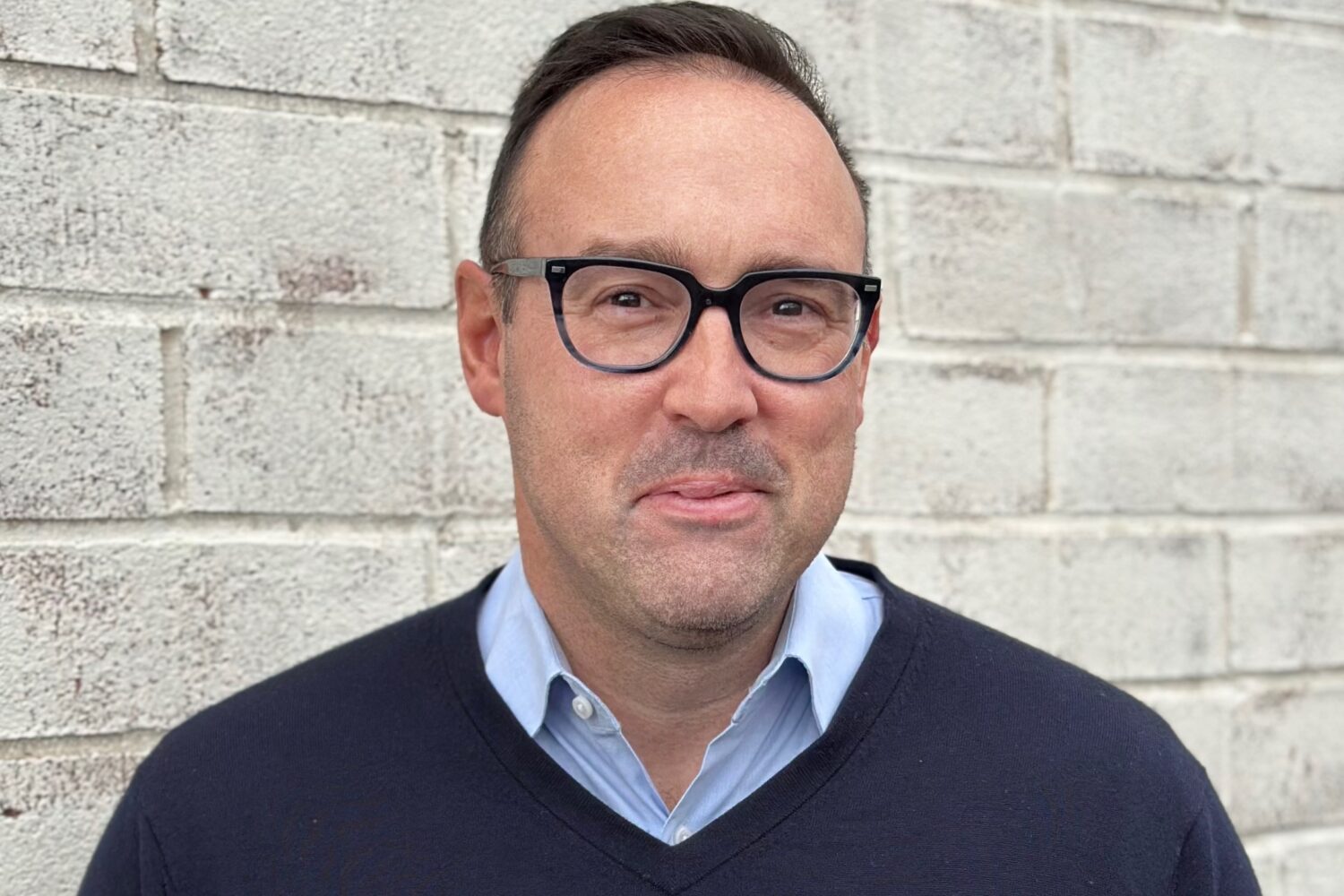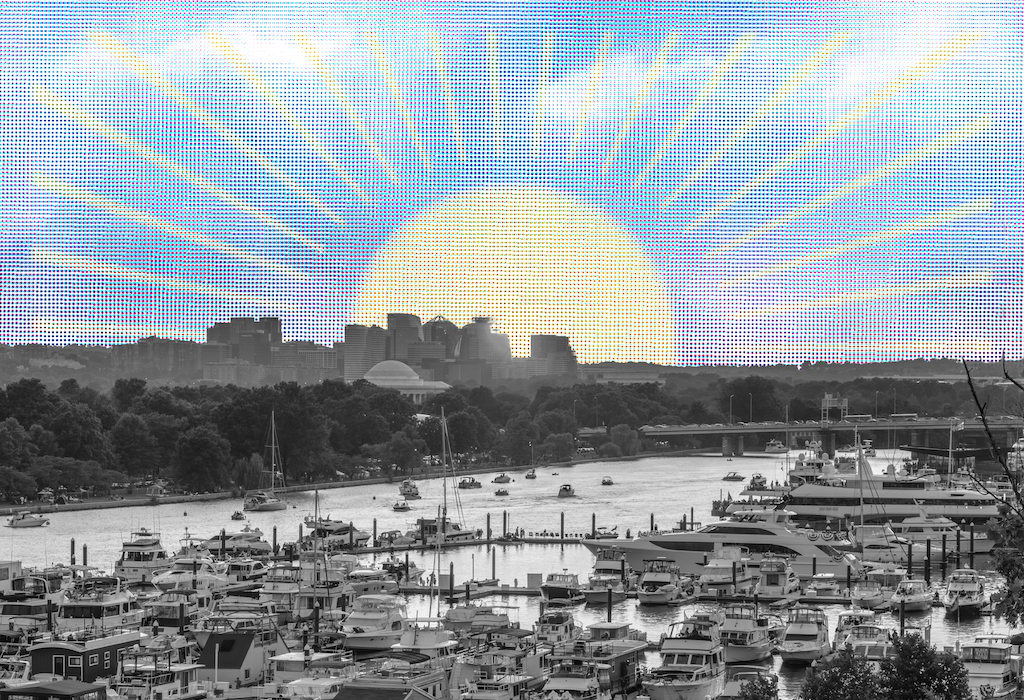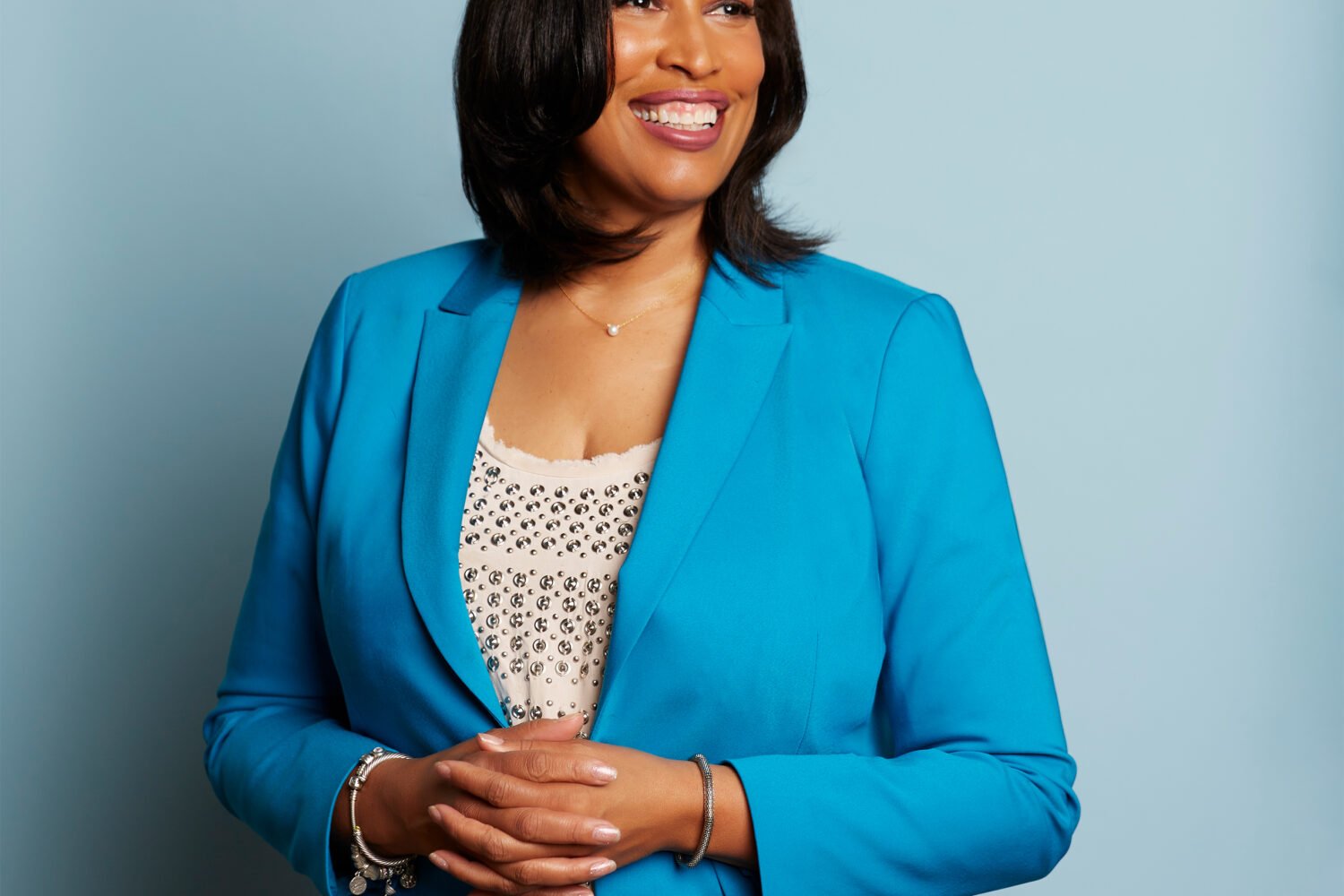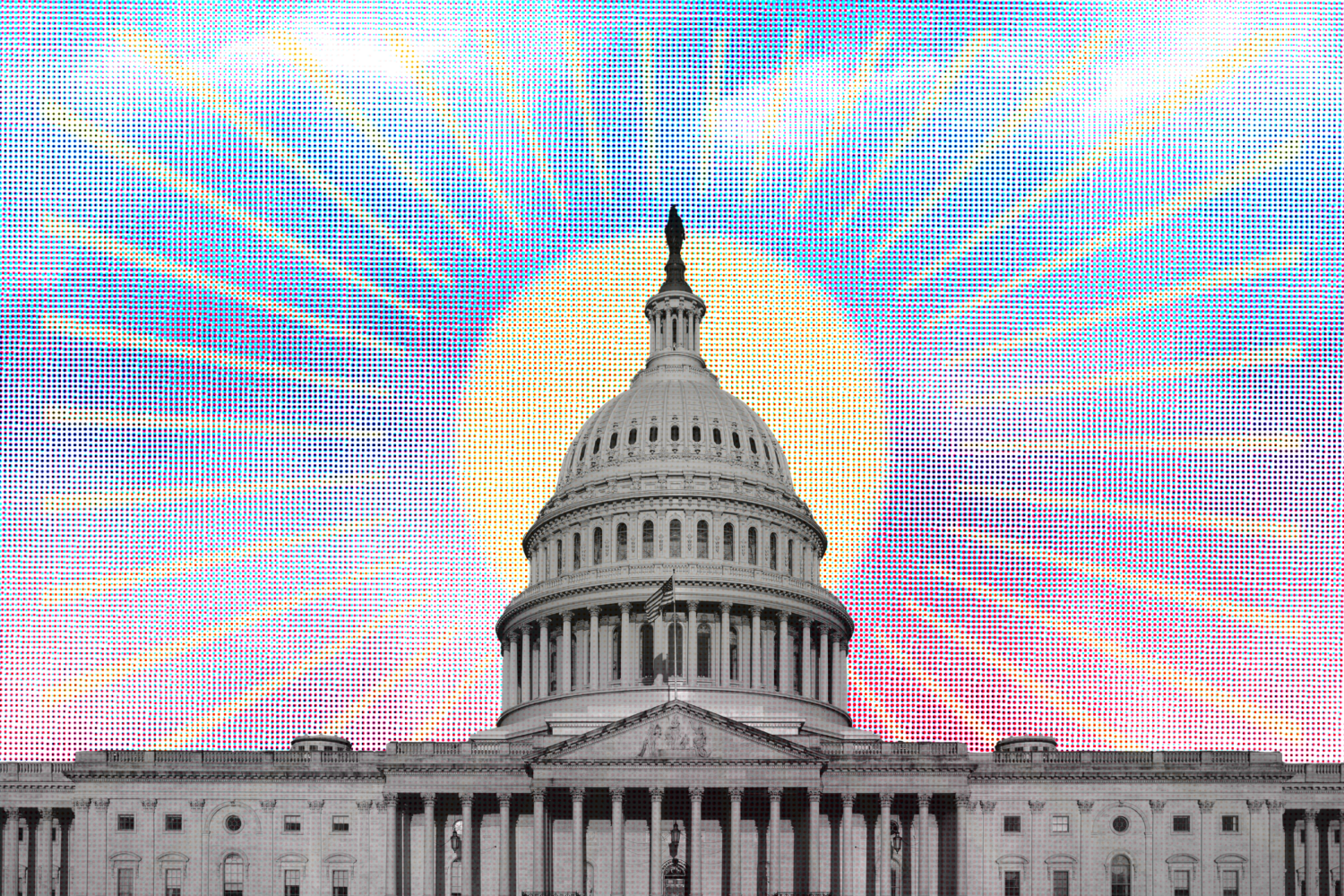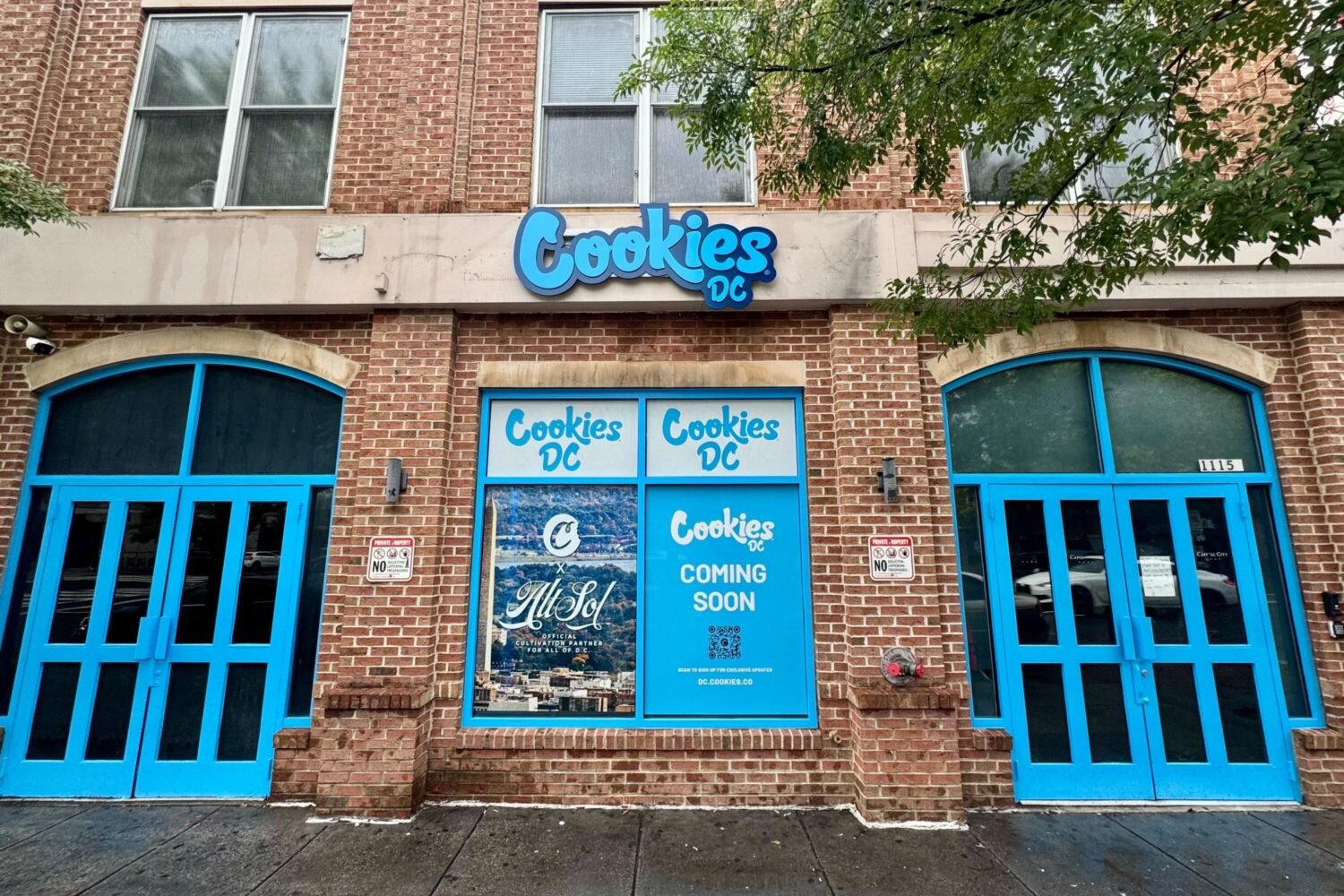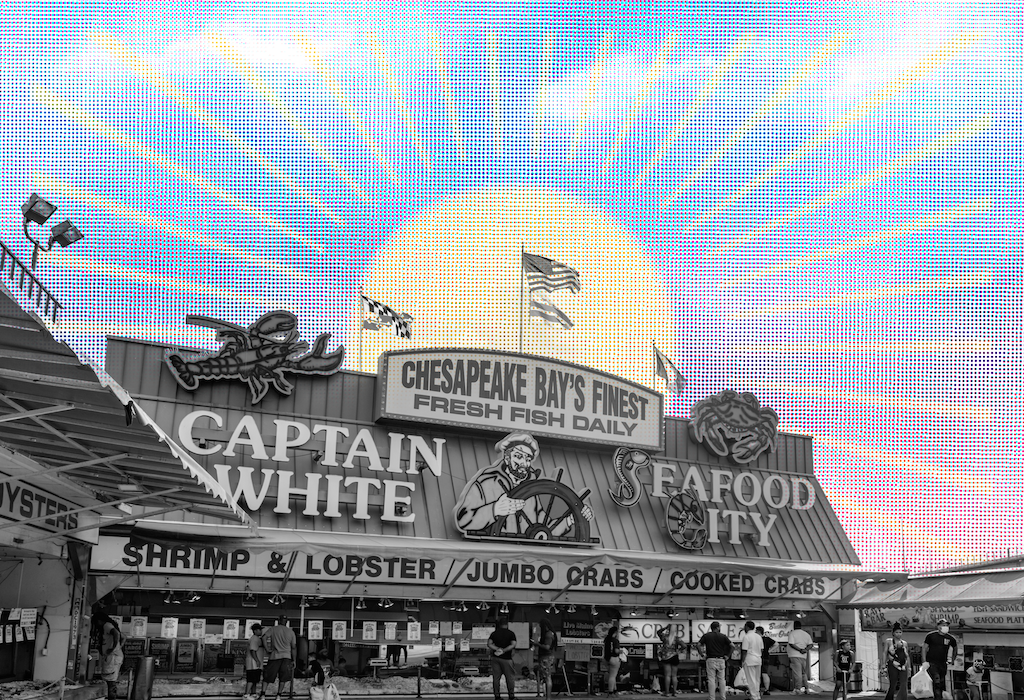Last May, Chris Kain received an unwelcome surprise while attempting to pick up a prescription: A pharmacy employee told him his employer-provided insurance had been declined. Had Kain worked for another company, this might have seemed like an annoying but easily fixable glitch. But he was the managing editor of DC’s Current Newspapers, a position he’d held for 26 years, and in recent years financial uncertainty had crept around his employer in a way remarkable even for a small print publication.
Employees past and present talk about delayed paychecks, or checks that come with instructions not to deposit them for a couple of days. A succession of printers has sued the company for nonpayment. Staff have departed and haven’t been replaced. As the Current approaches the end of a three-week holiday break, it’s not crazy to wonder about how much of a future the beloved community paper has.
It wasn’t always this way. For much of the past 23 years, since the Current’s owner, Davis Kennedy, bought the company, the papers thrived serving up news about neighborhood meetings, zoning updates, high school sports, and all the other goings-on around Northwest DC. Issues printed a decade ago typically ran at 48 or 56 pages, thickened with real-estate ads showing off the city’s wealthiest neighborhoods.
“If you look at just about every survey of what people want in news, community news is at the top,” Kennedy says.
He’s not wrong. Numerous studies by the Pew Research Center show that people continue to hold local news in high regard, with nine in ten respondents in a 2015 survey saying they follow news in their communities closely. And for decades, Kennedy was successful in delivering hyperlocal news to Washingtonians. Before buying the Current, he transformed the Gaithersburg Gazette, once a 10-cent weekly, into a chain of papers distributed for free across Montgomery County.
“We may not be competing for Pulitzers, but no one else tells the community more about where they live than we do,” Kennedy told the Washington Post in 1989. Three years later, the Post bought the Gazette papers from Kennedy, offering what he tells me was “far beyond what I thought it was worth.”
For a time, it appeared Kennedy was replicating that success at the Current, which he purchased in 1994. The Current documented the local squabbles and track meets to which the Post would never commit much ink. In 2004, one of its writers won a national award for environmental reporting for coverage of the World War I-era chemicals buried in Spring Valley from when the neighborhood was a weapons-testing site.
But small papers can’t escape the big pressures the news industry faces. A major blow came in 2015, when the Post—under the new ownership of Jeff Bezos—announced it would close the Gazette papers. That move triggered the collapse of a regional network in which advertisers could buy placements across small publications in DC, Maryland, and Virginia. With ad revenue taking what he now recounts as six-figure toll, Kennedy pleaded with readers later that year for what the Current had never asked under his ownership: payment.
“We are inviting you and other readers to help us by voluntarily paying the cost of printing and delivering your paper, which we estimate to be about $52 annually,” Kennedy wrote in a letter included in the October 21 issue.
Kennedy says the now-annual appeals have been “quite successful, though not so much that it solidifies the paper’s finances.” But if the Current wants to rebound and survive long-term, it will have to get serious about reader revenue, says Matt DeRienzo, the executive director of the Local Independent Online News Publishers.
“Reader revenue makes you authentically engaged with your audience,” DeRienzo says. “That being said, it’s not an easy business if you’re stuck in print and haven’t been able to transition to a digital business model.”
DeRienzo points to some of his organization’s member publications in places like Berkeley, California, and northeast Kansas that have thrived by shifting their revenue models toward memberships and paywalls. But his members, even if they started in print, are now primarily digital. Until very recently, the Current’s digital strategy was to avoid one assiduously, eschewing a full-blown website in favor of PDFs posted several days after the print copies were distributed.
That changed in March, when it finally launched a real website with digital versions of its content. Still, the website was designed as an afterthought to the print edition rather than an editorial product of its own. “The focus is going to be selling the print edition,” David Ferrara, the Current’s chief operating officer, said at the time.
That focus, though, does not appear to have paid the bills or kept the staff intact. The Current’s most recent issue, dated December 20, contained a letter from Kain announcing it was his final issue as managing editor. Kain’s departure was by far the biggest in a year that has seen many people leave the Current. Since last July, sports editor Brian Kapur, staff writers Mark Lieberman and Katie Pearce left, and assistant managing editor Brady Holt moved to a part-time role.
With Kain’s stepping down, the Current employs a single staff writer, Kirk Kramer, who was hired in November, and an editorial assistant, Zoe Morgan, who is also a law student at American University.
“The managing editor made a decision a while back he was leaving his position here, and that had a ripple effect,” Ferrara says of the editorial drain. “They had the feeling things were going to change for the worse, so they left.”
The Current has hired Kain’s replacement, though Ferrara declines to identify that person before the next issue’s publication, on January 10.
Ferrara is confident the new, albeit smaller, editorial staff will be able to continue to serve up hyperlocal news to Northwest DC. “We’re running thin, there’s no question,” Ferrara says. “With the new management we’re bringing in, we’re expecting not to have problems with the editorial product. No enterprise can go on for [26] years without a change in management of some sort.”
But the people who have departed left a workplace that dealt them personal hardships; in one case, a Current staffer had to get a bridge loan from friends and family to cover a rental payment.
“You get a whole paycheck, but you get it late and then you’re told not to deposit it until later,” a former Current employee said. “Some months it gets really tight.”
Pay at the Current is unglamorous, even by journalism standards. Staff writers earn wages beginning at $14.90 per hour, although with a small staff, there’s ample opportunity for overtime covering the nuts and bolts of life in Northwest DC. But while that kind of experience is invaluable for many young journalists, the company’s shaky finances make it tough for some current employees to help find their replacements.
“It’s an awkward situation with leaving, because they’re asking if you know someone would would want the job,” says the ex-Current employee, who left the paper in late 2017. “I can’t in good conscience tell anyone this is a great place to work.”
Staff grew particularly wary of the Current’s management in May. Employees learned their health insurance provider had dropped their coverage after the company failed to make their payments on time, even though it continued to deduct premiums from paychecks. Kennedy and Ferrara found an emergency plan to provide temporary coverage, but short-term plans are not compliant with the Affordable Care Act’s individual insurance mandate. (The regular insurance was eventually reinstated, and while a few pay cycles went by without insurance payments being deducted from paychecks, employees were never reimbursed for the period during which their coverage dropped.)
Ferrara describes the health-care mess as a snafu that occurred after the company dropped its Baltimore-based broker in favor of buying a plan on DC Health Link, the District’s insurance exchange. That group created a “very sloppily managed transition,” he says, including a weeks-long period of silence on the exchange’s part. “There was a period of time when we were negotiating and they canceled the insurance unbeknownst to us,” Ferrara says.” We got through and got things reinstated.” Kennedy adds that the company may have also had a “temporary shortage of cash.”
But Ferrara and Kennedy do not deny pushing back paychecks, a condition they blame on uneven advertising sales. “Like a lot of the companies in the news industry, the collection of advertising revenue is unpredictable,” Ferrara says. “There are times we’ve had to delay payday for a couple days. We’ve had to ask people to hold checks.”
He adds that belated paydays haven’t been an “ongoing problem” for a year. But not everyone’s pay is up-to-date; one former Current employee, who left in November claims to be owed more than $3,100 in unpaid wages and vacation time, according to a complaint filed with the DC Department of Employment Services.
The late paychecks and lapsed insurance weren’t just shocks to younger employees. Former Current Newspapers employees, whose experiences with the company ranged from a few years to decades, say Kennedy does not share much information about the company’s finances.
“Maybe he thought it was going to turn around,” says Gary Socha, who stepped down as the Current’s advertising director in July 2016.
The Current’s struggles go beyond its ability to make payroll and provide benefits. In September, it was sued by Gannett for more than $180,000 in printing bills accrued in 2015. That’s down from a debt that peaked at $264,754 in August 2015, but the Current hasn’t been able to make a payment since January 2016. The remaining amount owed is greater than the cash value of the company; a balance sheet, dated December 2016, included in Current Newspapers’ response to the suit put the company’s assets at just below $173,000. In a personal letter replying to the suit, Kennedy wrote that he cannot afford to hire a lawyer.
Gannett is not the only printer to which the Current owes money. In August 2016, after using another printer, Current Newspapers started using Bartash Print Media, in Philadelphia. The relationship only lasted until February, when Bartash cut off the Current for not paying its bills, which totaled $161,000. The Current still owes more than $105,000, according to a judgment entered against it in May by a Pennsylvania court and accepted by DC Superior Court in August.
The Current’s response to the proceedings has been “silence, no payments, a refusal to acknowledge,” says Keith Fisher, Bartash’s vice president of finance and administration. “We have clients that are easily the size of the Current that have no problem paying their bills,” Fisher says. “They were taking the position they would wait two months, then pay. Annualized, they would have been a top-ten client.”
Bartash even bought a notice in the March 23 Washington Post, asking if the Current had any other creditors. Bartash’s case to recover the money advanced November 17, when DC Superior Court served an order on Current Newspapers’ bank, seizing the publication’s assets, though Fisher says Bartash hasn’t recovered any of the money yet.
“The situation is in the hands of lawyers at this point,” Ferrara says. “They are not without some culpability in the breakdown of the relationship.”
Ferrara declines to say what that culpability is, again deferring to the legal process.
In his response to Gannett’s lawsuit—which Ferrara calls a “legacy issue” that predates his arrival at Current Newspapers—Kennedy attributed the inability to pay printing bills to a severe drop-off in advertising sales. The Current’s media kit suggests it should be an appealing venue to advertisers who want to reach some of the most ideal consumers in Washington. The company markets itself printing 48,205 copies each week—32,305 of which are home-delivered—across DC’s wealthiest neighborhoods like Chevy Chase, Palisades, Georgetown, and Spring Valley. But sales have slowed, and according to court documents, Kennedy says his best bet is a turnaround in 2018 based on advertising placed by candidates in the citywide races for mayor and Council chairman. That could be too hopeful: Records filed with the DC Office of Campaign Finance show the Current sold about $57,000 in political ads in 2014, and the 2018 mayoral race is so far shaping up to be far less dynamic than the eight-way Democratic primary brawl in which Muriel Bowser prevailed.
On November 6, Kennedy, representing the Current himself, filed a motion asking for more time to pay Gannett in the form of a personal letter to DC Superior Court Judge Sherry Trafford. Kennedy’s petition asks the judge to consider the Current’s value not as a business, but as a neighborhood pillar.
“Our company would no longer be able to publish our newspapers, which are the only medium offering residents news of their immediate communities,” Kennedy writes in the document.
While Ferrara speaks of lawyers handling Bartash, Kennedy’s read on the Gannet suit is optimistic: “I think we can work something out,” he says, declining to elaborate on what an arrangement might look like. (A DC judge may make that decision on January 19, when the Current and Gannett are due in court for a collections hearing.)
People who have left the Current in the past couple years say Kennedy, 79, is out of step with changes in the publishing industry.
“I suggested he start trying to find a buyer,” Socha says. “He was getting older, and I didn’t see any transition plan. I thought it wasn’t fair to the employees for him to hold on to it until he was too late.”
Socha, who had worked for Kennedy in the suburbs and followed him to Northwest DC, says Kennedy was long savvy about hyperlocal news, but that what he described as Kennedy’s disorganization about running a business eventually caught up.
“Davis was a very good operator,” says Socha, who is now a consultant to the AFL-CIO Investment Trust Corporation. “He understood community news better than anyone I ever knew. It was just information to those communities, and you could tell they appreciated it. I don’t know if it’s a combination of Davis’s age and other things. I can’t explain what he’s done with this kind of debt. He did keep that from everyone.”
The end of the regional ad network following the Gazette’s demise was the first of successive blows to the Current’s revenue sources. Socha’s departure was another. Ferrara, as the COO, took over advertising, but lacked Socha’s sales contacts. A wave of departures on the business side didn’t help.
“He didn’t know anyone,” Kennedy says. “Advertising fell off a bit, but it’s recovered because he’s getting to know people.”
Socha’s eventual replacement, George Steinbreaker, left the Current last fall. Ferrara says the company has since brought back former salespeople to handle the advertising accounts. He says the company is now working on growing its advertising base, including on its nascent website, which has been sold to existing advertisers as an add-on to their print buys.
The Current may also try to tap its readers for more consistent revenue than yearly donation requests, including paid subscriptions for home delivery and the website. “We’d like to test a paywall,” Ferrara says. “That’s not on the agenda right now, but it’s something we’re considering.”
Ferrara may one day have more say in the matter than Kennedy, who avoided charging people to read his papers for years, if the pair go through with plans for Ferrara to eventually take majority ownership of the Current.
“I’m being as vague as I can make it,” Ferrara says. “We have a structure we’ve discussed, but there’s nothing carved in stone. Speaking of stone, we have to get back to breaking rocks.”

